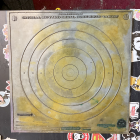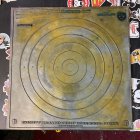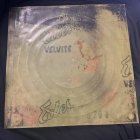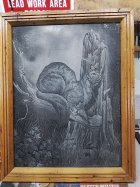Well this was my first real job in the trades. I worked for a engraving company in Denver, started in the etching department. anyone could make artwork, then we took a picture of it with a camera that was 20 feet long. Like an old bellows camera. the back of the camera was actually a dark room. We had one camera that could take a 40 inch square piece of film. the film was then put on a light sensitive coated plate in a vacuum frame, then exposed to light, so the image was now on the plate backwards and developed and dried. the plates were ether zinc, copper, or magnesium.
then the plate was put into an etching machine on a table that rotated, and the bottom of the machine there was paddles that agitated the nitric acid as the table turned. The acid ate away the plate were it was not protected by the light sensitive coating. there was an oil in with the acid that would cling to the side of the image so it would not get under the image. so then the plate could go into the letter press and sheets of paper were feed one at a time and the image came out on the paper.
So if your plate is fairly light, its probably magnesium. if its heavier, its zinc.
Now if its lead, then a plate was made like above, but reading right, then it was put into a press that squeezed a thick piece of damp mat paper into the plate so there was the opposite image in the mat. This was the process we did for newspaper ads that were sent all over the country. a light weight mat could be sent to the papers cheaper than making 100's of plates, and the newspapers poured lead into the mat to get a lead plate for there press.
Your plate looks to be well used, the image is coming through the back, so its had lots of impressions. its probably zinc or magnesium.
these plates were also mounted on wood, depending on what kind of press you had.
before the etching process, they were carved out by hand, first in stone, then in metal.
Now you know more than you wanted about being a "Photo Engraver" which i was for 30+ years.















